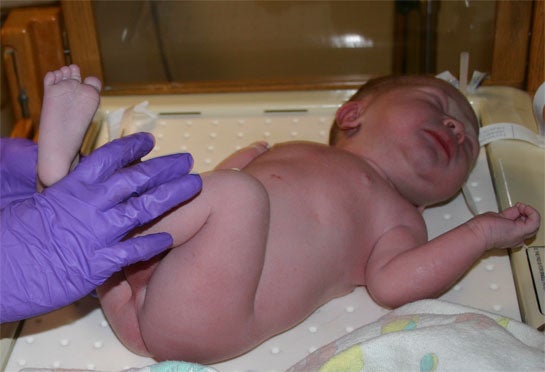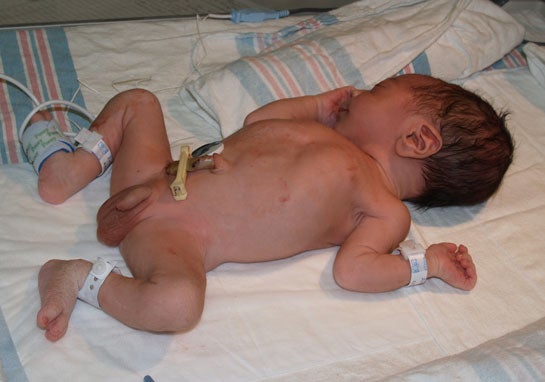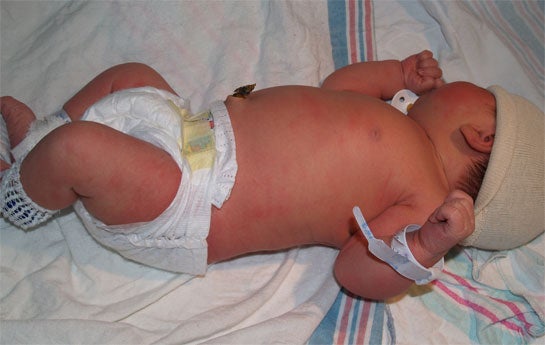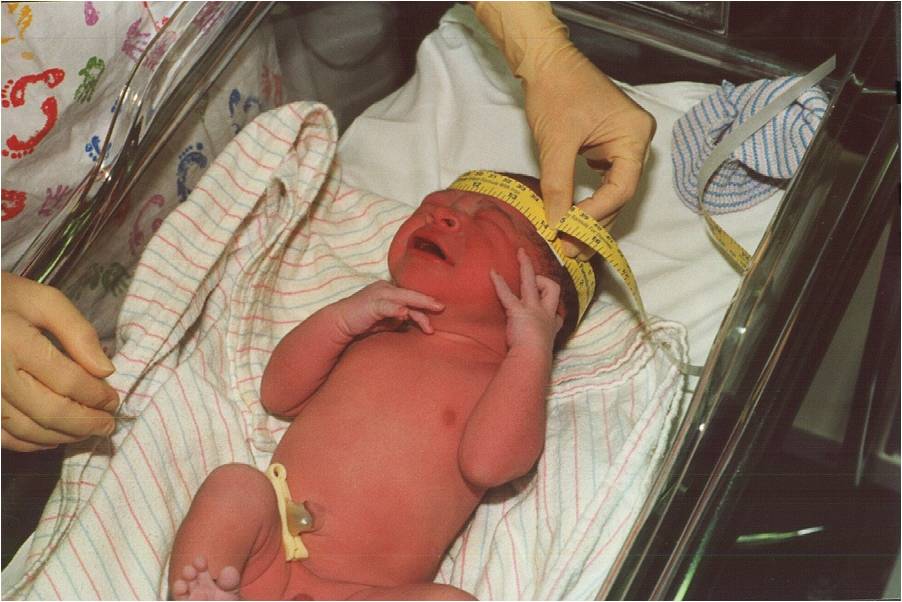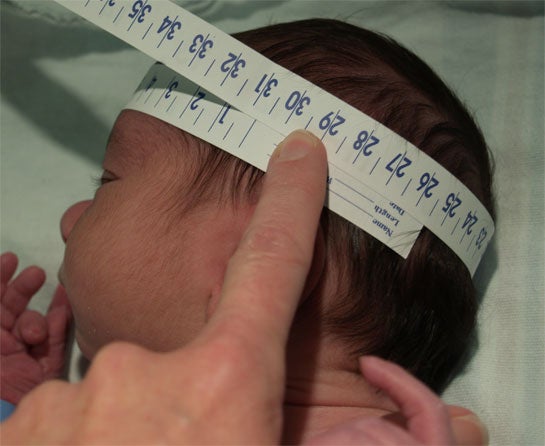WEIGHT, HEAD AND CHEST CIRCUMFERENCE AND LENGTH
The weight, head and chest circumference and length are measured soon after birth. These may be delayed so that the mother and infant may bond with skin-to-skin contact.
Weight
The initial weight is measured soon after birth. Place a protective paper on the sanitized digital scale and set it to "0". The infant is placed on the scale without clothing. Keep gloved hands close to the infant to prevent a fall. Note weight in kilograms and pounds. Weigh the infant quickly to prevent heat loss, which could lead to hypothermia.
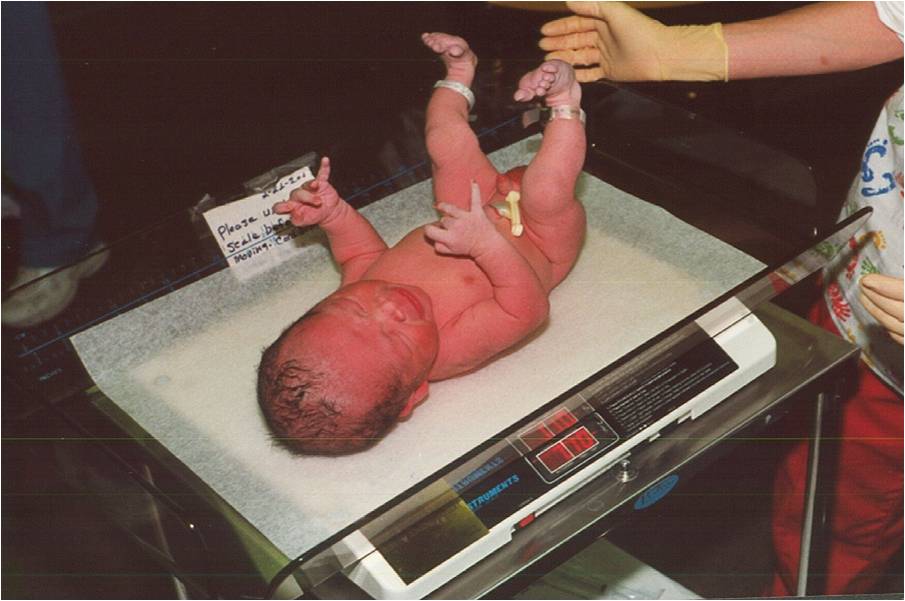
An infant born at 40 weeks gestation (normal pregnancy) and weighing >2500 grams and < 4000 grams
grams and < 4000 grams is considered AGA or appropriate for gestational age.
is considered AGA or appropriate for gestational age. A small infant is SGA.
A small infant is SGA. A large infant is LGA.
A large infant is LGA. Although infants can lose up to 10% of their birth weight during the first few days, the physician should be notified if the infant loses 7% of birth weight to monitor for dehydration. The lost weight is regained within the first two weeks. Weight is obtained daily at the same time. SGA and LGA infants are at risk for hypoglycemia. Their glucose levels will be monitored closely in the first few hours after birth.
Although infants can lose up to 10% of their birth weight during the first few days, the physician should be notified if the infant loses 7% of birth weight to monitor for dehydration. The lost weight is regained within the first two weeks. Weight is obtained daily at the same time. SGA and LGA infants are at risk for hypoglycemia. Their glucose levels will be monitored closely in the first few hours after birth.
|
|
|
|
|
AGA: 7 Lb |
SGA: 5 Lb 7 OZ |
LGA: 8 Lb 9 Oz |
Pictures used with permission from Dr. Janelle Aby, Stanford Medical Center, Palo Alto,CA
Head Circumference (FOC or frontal occipital circumference)
A clean paper tape is used for each infant. Usually it is located in the "newborn pack" that includes hats, shampoo and comb. Measure the head circumference at the greatest diameter around the forehead (frontal area) and back of head (occiput). The average head circumference (HC) is 33-37 cm.
Microcephaly (as in the picture below) is a head smaller than 32 cm.
(as in the picture below) is a head smaller than 32 cm. Hydrocephalus
Hydrocephalus occurs when the head is 4 cm
occurs when the head is 4 cm greater than chest circumference.
greater than chest circumference.
Picture used with permission Dr. Janelle Aby, Stanford Medical School, Palo Alto, CA
Chest Circumference
Measure the chest circumference at the nipple line. The average is 30 to 33 cm and should be 2-3 cm LESS THAN head circumference.
and should be 2-3 cm LESS THAN head circumference.
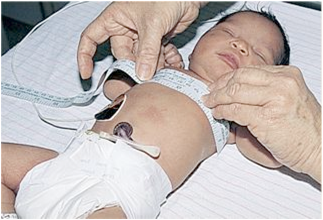
Elsevier picture (Courtesty Marjorie Pyle, RNC, Lifecircle, Costa Mesa, CA).
Length
Measure from the top of the head to the bottom of the heel. Make sure the knee is extended (and not bent). The normal length is 45 to 55 cm. (One method of measurement is to mark the top of the head and the end of the heel on the sheet and measure between the two points).
(One method of measurement is to mark the top of the head and the end of the heel on the sheet and measure between the two points).
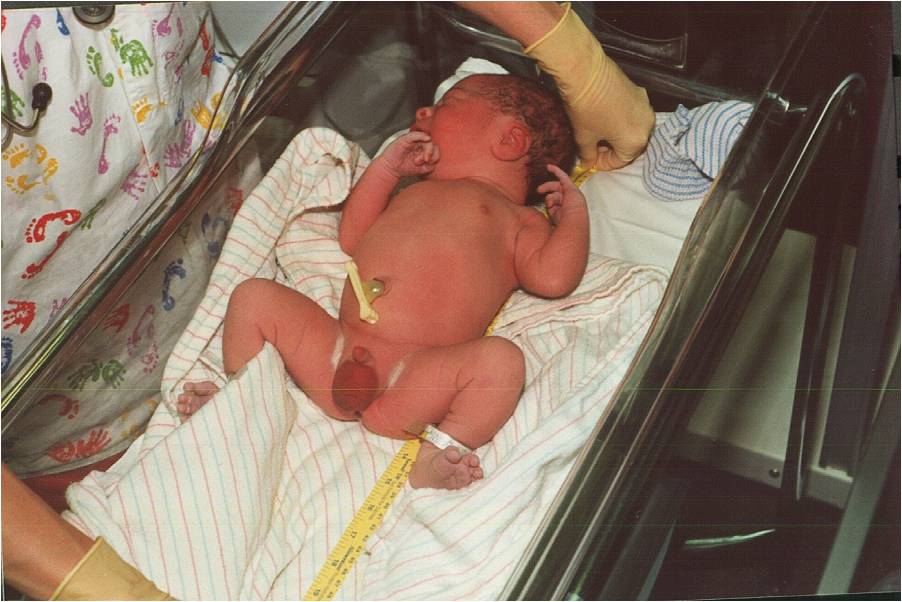
See Newborn Assessment video for a demonstration of length measurement.
Growth Chart
Head circumference, chest circumference, length and weight are plotted on a growth chart. While in the hospital, the weight is monitored each 24 hours. After discharge from the hosital, these measurements are taken at each visit to the pediatrician to monitor growth.
Click here to plot values on an interactive growth chart. Use today's date for the birth date. Length 54 cm, weight 3.9 kg and head circumference 36 cm. Choose the newborn growth chart for a girl.
A complete head-to-toe examination follows these measurements and may be delayed until the mother has had time to breastfeed her infant or hold the infant skin-to-skin.
